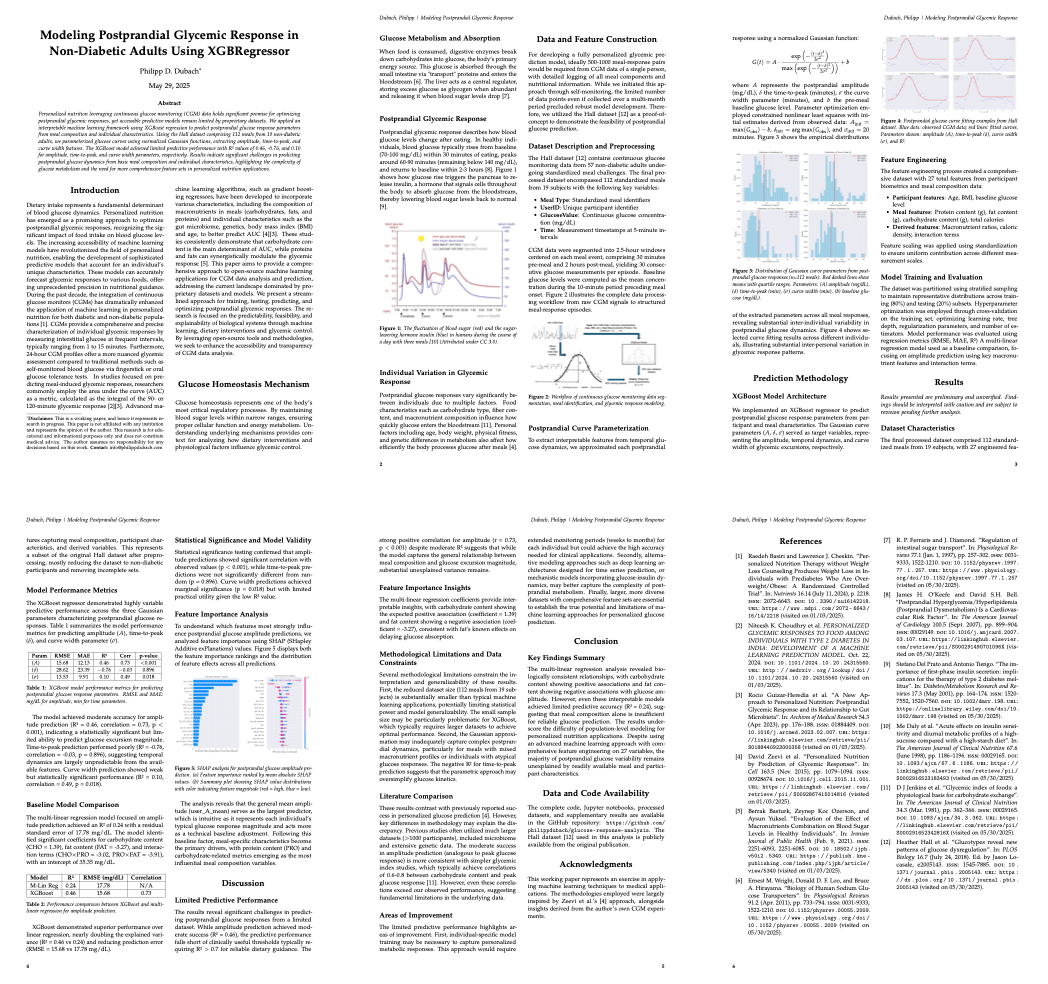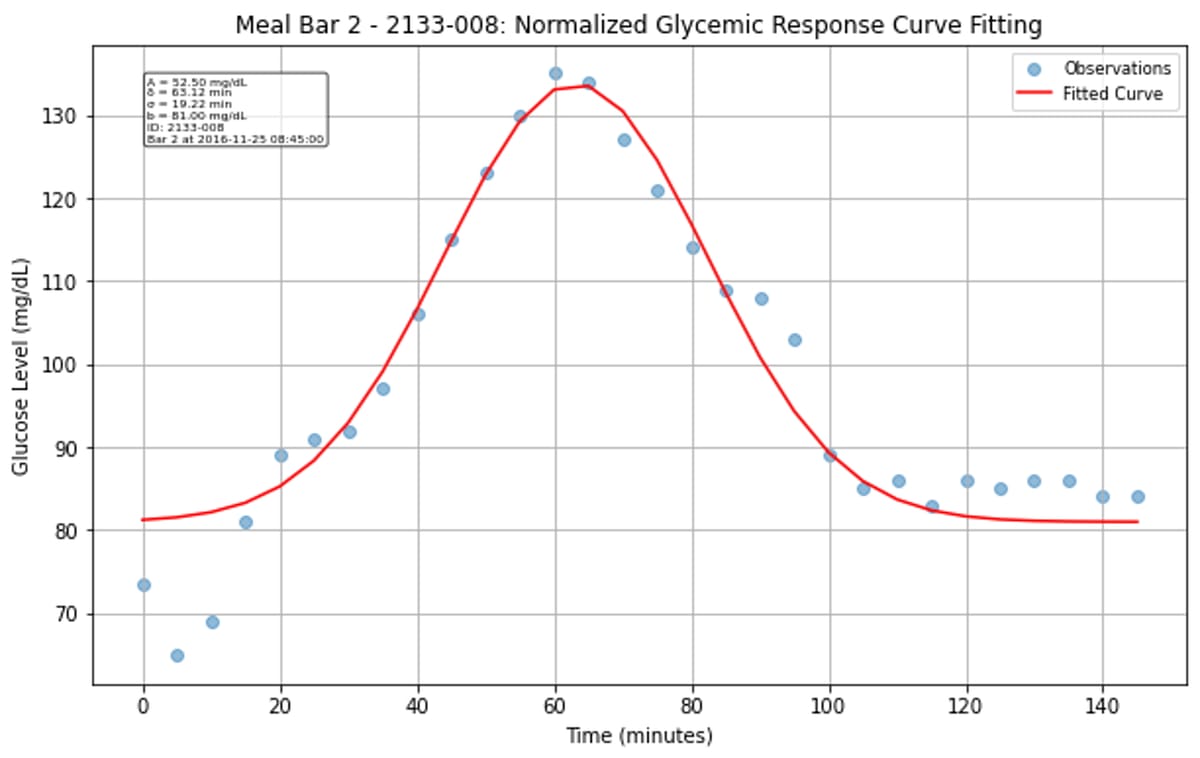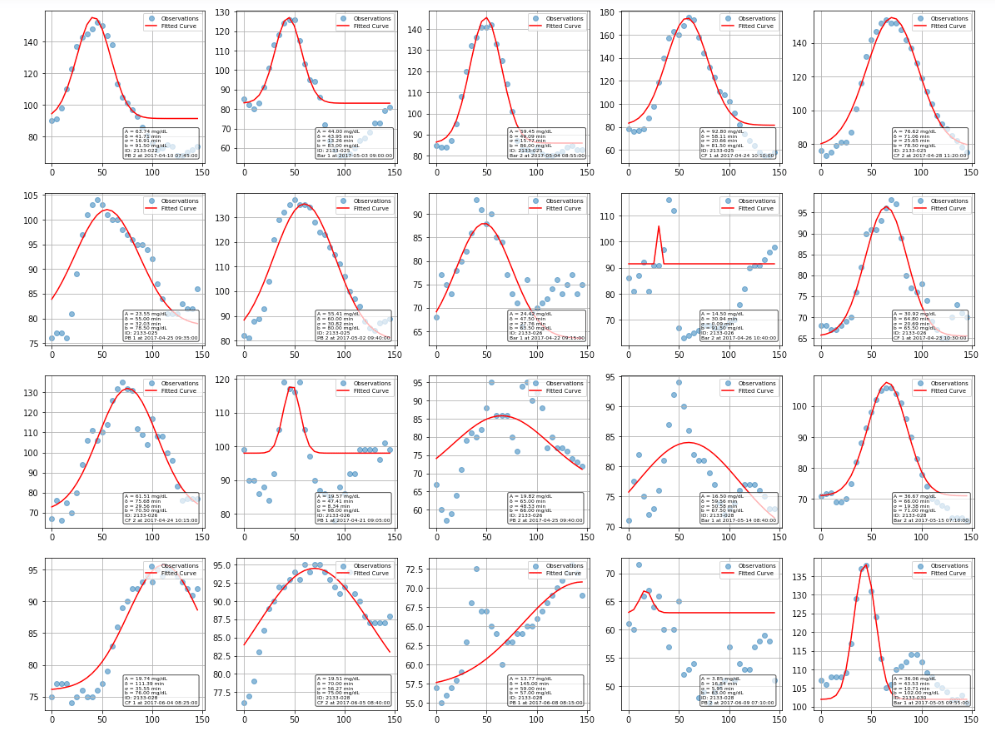Earlier this year I wrote how I built a CGM data reader after wearing a continuous glucose monitor myself. Since I was already logging my macronutrients and learning more about molecular biology in an MIT MOOC I became curious if given a meal’s macronutrients (carbs, protein, fat) and some basic individual characteristics (age, BMI), these could serve as features in a regressor machine learning model to predict the curve parameters of the postprandial glucose curve (how my blood sugar levels change after eating). I came across a paper on Personalized Nutrition by Prediction of Glycemic Responses which did exactly that. Unfortunately, neither the data nor the code were publicly available. And - I wanted to predict my own glycemic response curve. So I decided to build my own model. In the process I wrote this working paper.




While the model achieved moderate success predicting amplitude (R² = 0.46), it completely failed at predicting timing - time-to-peak prediction was essentially random (R² = -0.76), and curve width prediction was barely better (R² = 0.10). Even the amplitude prediction, while statistically significant, falls well short of an R² > 0.7. Studies that have achieved better predictive performance typically used much larger datasets (>1000 participants). For my original goal of predicting my own glycemic responses, this suggests that either individual-specific models trained on extensive personal data, or much more sophisticated approaches incorporating larger training datasets, would be necessary.
The complete code, Jupyter notebooks, processed datasets, and supplementary results are available in my GitHub repository.
_ _
(10/06/2025) Update: Today I came across Marcel Salathé’s LinkedIn post on a publication out of EPFL: Personalized glucose prediction using in situ data only.
With data from over 1,000 participants of the Food & You digital cohort, we show that a machine learning model using only food data from myFoodRepo and a glucose monitor can closely track real blood sugar responses to any meal (correlation of 0.71).
As expected Singh et. al. achieve a substantially better predictive performance (R = 0.71 vs R² = 0.46). Besides probably higher methodological rigor and scientific quality, the most critical difference is sample size - their 1'000+ participants versus my 19 participants (from the Hall dataset) represents a fundamental difference in statistical power and generalizability. They addressed one of the shortcomings I faced by leveraging a large digital nutritional cohort from the “Food & You” study (including high-resolution data of nutritional intake of more than 46 million kcal collected from 315'126 dishes over 23'335 participant days, 1'470'030 blood glucose measurements, 49'110 survey responses, and 1'024 samples for gut microbiota analysis).
Apart from that I am excited to - at a first glance - observe the following similarities: (1) Both aim to predict postprandial glycemic responses using machine learning, with a focus on personalized nutrition applications. (2) Both employ XGBoost regression as their primary predictive algorithm and use similar performance metrics (R², RMSE, MAE, Pearson correlation). (3) Both extract comprehensive feature sets including meal composition (macronutrients), temporal features, and individual characteristics. (4) Both use mathematical approaches to characterize glucose responses - I used Gaussian curve fitting, while Singh et. al. use incremental area under the curve (iAUC). (5) Both employ cross-validation techniques for model evaluation and hyperparameter tuning. (6) SHAP Analysis: Both use SHAP for model interpretability and feature importance analysis.